In 2009, Derek Morrison stood in an airport boutique and considered spending $960 on a pair of Louis Vuitton x Kanye West sneakers crafted from rose-tinted suede and caramel leather. He ultimately decided against it — he couldn’t justify the price and had too many suitcases.A little over a decade later, the shoes are being advertised online for $10,000 a pair.”I’ve regretted it ever since,” said Morrison, who now works as European senior director for the sneaker resale platform, StockX.Released just months before West debuted his game-changing Nike x Yeezy line, the sneakers have become part of fashion history. “They represented a convergence of sneakers, Kanye and high fashion that was controversial at the time, but such a pivotal moment in the industry,” Morrison said, describing it as “a breakthrough that paved the way for the modern era we see today.”
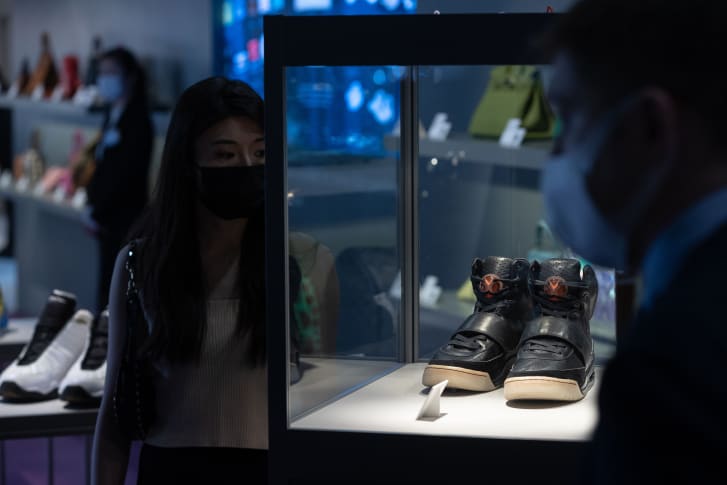
Kanye West’s Grammy-worn 2008 Yeezy prototype sneakers, which sold for $1.8m at Sotheby’s in April. Credit: Jerome Favre/EPA-EFE/ShutterstockBut the price tag remains relative pocket change compared with some of the most valuable shoes on the collectors’ market.The auction record for sneakers has been broken multiple times since 2017, jumping from a little over $190,000 for a pair of Converse signed by Michael Jordan, who wore them at the 1984 Olympics, to the $615,000 paid for a pair of the basketball star’s Nike Air Jordan 1s in 2020. Then, earlier this year, another of Kanye West’s creations — the prototype Nike x Yeezys he wore to the 2008 Grammys — became history’s most expensive sneakers after selling via a private sale for $1.8 million. Over the past five years, there’s been an “explosion” in collectors spending big money on rare shoes, according to Caitlin Donovan, head of handbags, streetwear and sneakers at Christie’s auction house. Together with sneaker resale platform Stadium Goods, Donovan recently curated a sale focusing on Nike’s Jordan line. The online auction, which concluded this week, featured almost 30 rare pairs, from Jordan prototypes and game-worn sneakers to early limited-edition samples. A pair of red and black salesman sample Air Jordan High 1s was the auction’s most expensive single item, selling for $27,500.
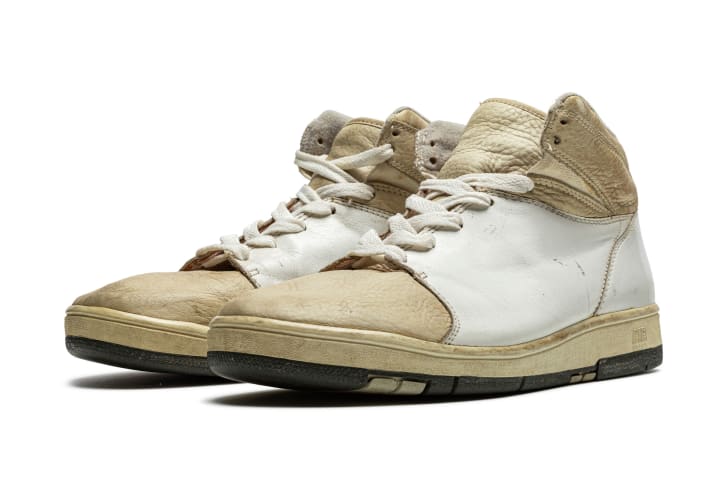
A pair of Nike Air Jordan 1/2 development samples carried an auction estimate of $120,000 to $160,000. Credit: Courtesy Christie’s”From function to fashion, this auction (highlighted) some of the iconic shoes that started on the court, and landed themselves firmly in mainstream pop culture and fashion history, on the feet of Grammy winners and celebrated fashion icons to storied athletes across a number of sports genres alike,” Donovan said.
A luxury collectible
Surging auction prices reflect the robust growth of the secondary resale sneaker market, which StockX estimates is now worth $10 billion. This figure is predicted to climb to nearly $30 billion by 2030, as growing numbers of collectors invest in limited edition “deadstock” items — shoes that “must be new and unworn,” Morrison said — with the aim of reselling or displaying them as prized possessions.Ligaya Salazar, curator of the London Design Museum’s new StockX-sponsored exhibition “Sneakers Unboxed: Studio to Street,” said that it is “young people, largely from diverse inner-city neighborhoods” who have “made sneakers what they are today.” These original sneaker aficionados continue to have a major impact on the industry today, she added.
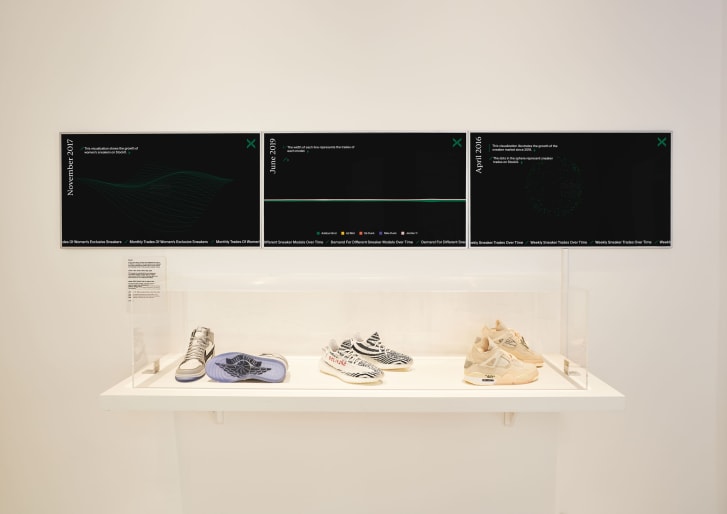
Sneakers on display at the London Design Museum’s exhibit “Sneakers Unboxed.” Credit: Courtesy Felix Speller/London Design MuseumSneaker culture is also deeply intertwined with sports culture — especially following the launch of Michael Jordan’s 1985 Air Jordan sneakers, which Donovan called “the first and most collectible sneaker.””It was the iconic sneakers of the early Jordan era that slowly permeated mainstream and pop culture, creating a breed of new collectors: sneakerheads,” she said.High-tops and high fashion: How sneakers rose from street to chicCollectors have diversified in the years since, with Donovan seeing a growing number of millennials, who “are only just starting on their collecting journey,” join the more “serious and established collectors of sports history and fashion.”Sneaker collector Ann Jacobe, who owns around 500 pairs (and insists that she wears even the most valuable ones), said she welcomes new interest from luxury investors and auction houses. The Filipina collector, who has “lost count” of how much money she has spent on sneakers, said it “elevates the consciousness that shoes can be treated like art.”
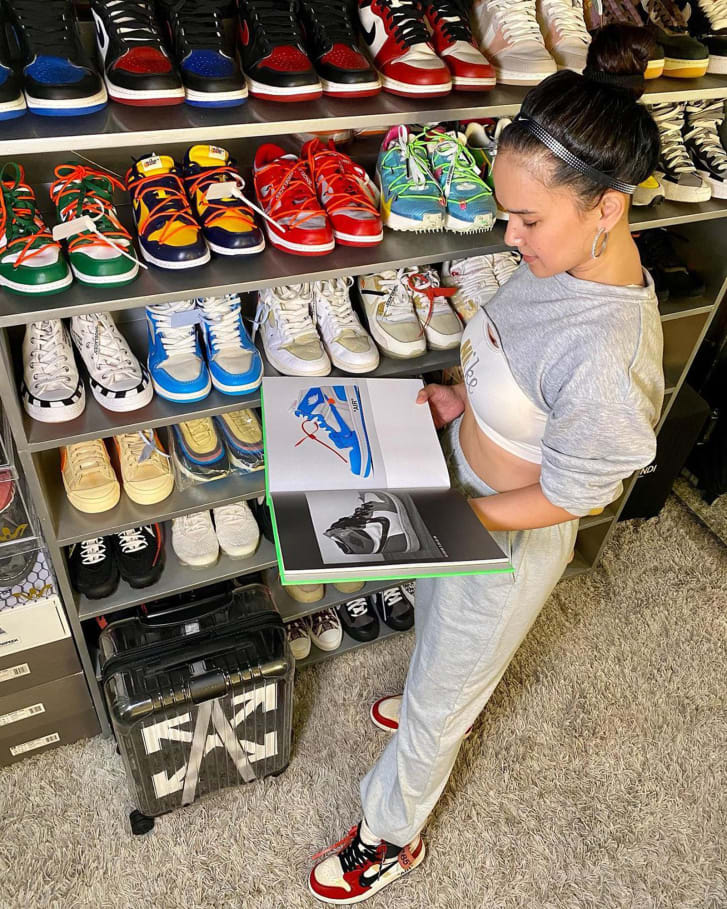
Collector Ann Jacobe with some of the sneakers in her closet. Credit: Courtesy Ann Jacobe”It’s a great thing, as I hold sneakers in high regard much like a sculpture or a painting. And based on the prices of some pairs (at auction), it is definitely going that route,” she said, adding she would consider bidding for sneakers at auction if they “resonate with me and bring me joy.”While some collectors treat sneakers purely as an investment, others like Jacobe don’t simply want to own coveted pairs — they want to own the stories and lifestyles behind them, Morrison said. “People tend to devote themselves to values, or narratives, or themes that transcend individual brands,” he said, adding that sneakers can “make us feel connected to brands, people and cultural moments.”Speaking about her buying habits, Jacobe said, “Sometimes it’s how (a pair) make me swoon the first time I see them; sometimes it’s the story behind the sneakers and how it resonates with my values.”If Air Jordans are among the most popular sneakers on the market, they also have one of the best-known stories. The result of a collaboration between Michael Jordan and Nike, the design famously flouted the NBA’s “51% rule” that stated footwear had to be predominantly white. Jordan nonetheless wore a red and black pair during a preseason game, helping them transcend fashion to represent a cultural moment. Nike later capitalized on the controversy, reissuing the original Air Jordan 1s as the “banned” edition.

Ann Jacobe’s sneaker collection, which she estimates consists of 500 pairs. Credit: Courtesy Ann JacobeClearly aware of sneakers’ cultural power, Nike has since collaborated with luxury fashion labels like Dior and Sacai, as well as non-sporting celebrities such as Travis Scott and somewhat unlikely brands like Ben & Jerry’s. Others have followed suit, from Adidas’ Marvel Avengers-themed sneakers to Balenciaga’s appeal to gamers via a partnership with PlayStation.Touchstones of sneaker culture can be found throughout Jacobe’s 500-pair collection, including the Yeezy Boost 350 Turtle Doves (“a classic from Kanye West’s rich sneaker story,” she said) and the Nike Dunk SB Reese Forbes (from what she called the early-2000s “craze” for Nike’s SB skate shoes). She spent nearly a year looking for a rare pair of Nike x Off-White sneakers from 2017, saying it was “like a self-declared holiday when I unboxed them. The collector also seeks out shoes that pay homage to her home country. Her favorites include the Nike AF-1 Philippines, which feature the colors of the national flag, as well as a pair of Asics designed with Whang Od, the last traditional Filipina tattoo artist from the Kalinga tribe.”(It’s) so surreal finding and owning a pair that represents us and the community so well,” she said.
Changing attitudes
Not all collectors are motivated by their love for sneakers, however. As with art and property, shoes can represent both an investment and a way for collectors to “diversify their assets,” said Donovan, of Christie’s auction house.”Limited edition iterations of classic styles … have always been the pinnacle of the luxury secondary collecting market,” she said, adding: “Collectors seek out these collaborative works — often released in limited quantities on the primary market — on the secondary market at premium prices.
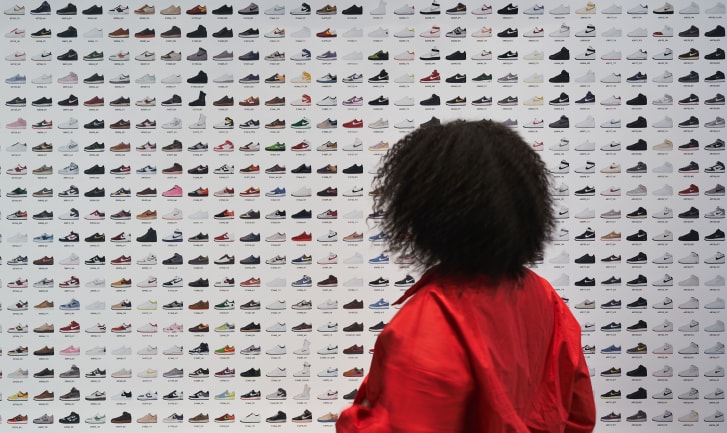
A visitor stands in front of a display at the London Design Museum’s exhibit “Sneakers Unboxed.” Credit: Courtesy Felix Speller/London Design MuseumResale sites such as StockX, which tracks sneakers’ real-time value and the latest sales like Wall Street stocks, has made it easier for collectors to treat rare, expensive sneakers like commodities. (The platform even checks for counterfeits at dedicated authentication centers). And getting hold of new limited-edition designs is, increasingly, big business. Collectors might once have queued up outside stores for the latest “drop,” but many of today’s resellers instead turn to online “botting” — using software that automatically buys up stock the moment a new collection goes online. For brands that would rather sell to sneakerheads than bots, it’s “an eternal arms race,” Morrison said. If savvy resellers pay their cards right, they could make tens of thousands of dollars flipping deadstock. StockX said that the Jordan 1 Retro High Dior collaboration was the most expensive sneaker release of 2020, selling for $2,000 but fetching $11,000 online via a Sotheby’s auction. Only 8,500 pairs of the sneakers were ever made — and they were launched on Air Jordan’s 35th anniversary, making for a perfect trifecta of rarity, luxury collaboration and historic moment. Today, the highest bid for a pair on StockX is over $12,600.”There are many factors why some may be more expensive than others, including how rare it is, has it been worn by a celebrity or if it was a hyped collaboration,” Morrison said. “But in general, it comes down to supply and demand — the fewer that are available, the more compelling or resonant the product is, and the more they’ll cost to obtain.”But regardless of whether collectors are buying for pleasure or profit, all are looking for sneakers that speak to the culture of their day, Morrison said. “They’re more than just something that goes on your feet — they’re a canvas that serve as a means of self-expression, whether you’re a collector or wearing them right out of the box.”
















